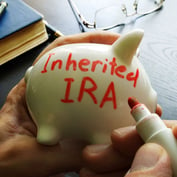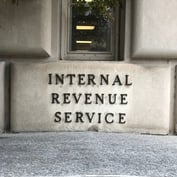The Internal Revenue Service (IRS) is trying to explain just how cafeteria plans and health reimbursement arrangements (HRAs) affect whether a worker is getting access to “affordable” health coverage.
The IRS rules could affect whether your benefits client’s worker has a legal right to shun employer coverage, seek subsidized coverage from a Patient Protection and Affordable Care Act (PPACA), and expose the client to the risk of having to pay thousands of dollars in fines.
The IRS has given its thoughts about how employer contributions to cafeteria plans and HRAs affect official PPACA health benefits affordability in a new batch of final PPACA coverage mandate penalty regulations. The IRS based the final regulations on draft regulations released in January.
PPACA calls for many individuals to have minimum essential coverage (MEC) or pay a “shared responsibility” penalty. The law also requires what it defines as large employers to offer full-time workers access to affordable health coverage with minimum value. If a large employer fails to offer full-time employees affordable coverage with minimum value, and the employees get subsidized coverage through a PPACA public exchange, the employer may have to pay significant penalties — and go through a complicated process to calculate the penalty payment amount.
See also: 15 PPACA provisions that will take effect in 2014
PPACA established the MEC rules by adding Section 5000A to the Internal Revenue Code (IRC). Another PPACA-related IRC addition, IRC Section 36B, determines when exchange plan users can qualify for the PPACA premium assistance subsidy tax credits.
In addition to addressing questions about IRC Section 125 cafeteria plans and HRAs, the IRS has used the new regulations to deal with matters such as hardship exemptions, the status of government health programs for the poor, and the relationship between anti-tobacco-use program incentives and group coverage affordability.
When employers are calculating affordability, they normally must assume that the wellness program enrollees will resist any efforts to improve their health. Employers must assume that the employees will fail to get flu shots or fill out wellness questionnaires, and that the obese employees will fail to diet. In the new final regulations, the IRS says employers can include financial incentives for going through anti-tobacco-use programs in affordability calculations. In other words: If smokers can earn a 10 percent discount by going to anti-smoking therapy sessions, an employer can assume smokers will earn the 10 percent discount when calculating whether the smokers’ health coverage is affordable.
For the many insurance agents and brokers who work with health account provisions, the health account provisions may have a bigger effect on everyday operations.
For a look at some of what the IRS said about health accounts, read on.

1. Health insurers need not be health account nannies.
In some cases, the IRS says, employers must run cafeteria plans or HRAs in a certain way if they want to include contributions to the accounts in PPACA coverage affordability calculations.








 November 24, 2014 at 12:20 PM
November 24, 2014 at 12:20 PM












